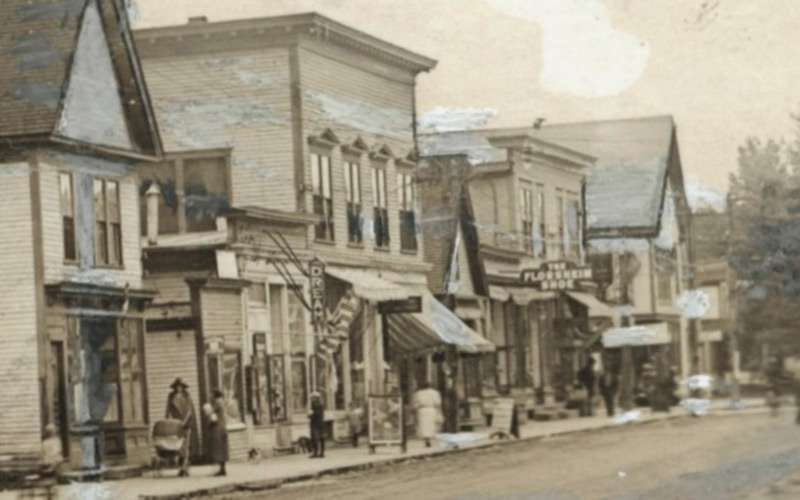
Plan for historic downtown Millinocket building moves forward
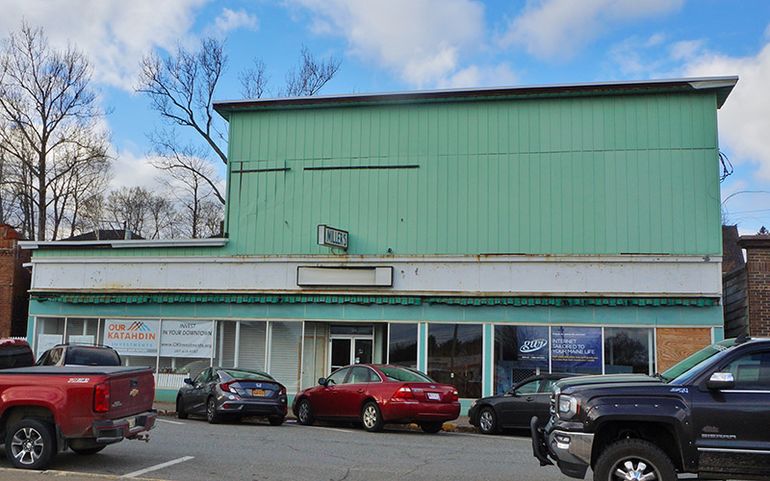 Photo / Maureen Milliken
The former Miller's department store, at 230 Penobscot Ave. in Millinocket is being redeveloped, including coworking space. The green metal facade will be removed in the spring.
Photo / Maureen Milliken
The former Miller's department store, at 230 Penobscot Ave. in Millinocket is being redeveloped, including coworking space. The green metal facade will be removed in the spring.
MILLINOCKET — A Portland coworking business owner will work with nonprofit economic development group Our Katahdin to develop coworking space in a building that once housed Miller’s department store, among other businesses.
Liz Trice, founder and owner of PelotonLabs in Portland, has contracted with Our Katahdin to design a business plan and operations manual for the space at 230 Penobscot Ave., which will become a downtown hub to support entrepreneurs, remote workers and small businesses.
“Our Katahdin firmly believes that supporting and growing small businesses in rural communities will lead to sustainable economic growth and more vibrant downtowns,” the organization said in a news release. “Creating a space for entrepreneurs to access and share resources and collaborate and connect is an essential component.”
Built in 1916, the 10,352 square-foot two-story building was a department store for many of the 82 years it was in use, and considered the heart of the town's downtown retail scene.
Even vacant, the building’s light-green facade is a focal point of downtown’s main street, Penobscot Avenue.
The build-out for the coworking space, just one part of the plan for the building, may begin in the spring, depending on how the planning, design and raising capital goes, Lucy Van Hook, community development director of Our Katahdin, told Mainebiz.
Trice said she’s looking forward to working with the community to help create a space that fits with the community and helps it grow its vision for the future.
“Coworking spaces can help activate downtowns through connecting people who are already doing creative work in a community, making their work visible to others, and inspiring locals and visitors to see future potential,” she said.
'Baddest, ugliest building'

The building, vacant since 2008 and taken over by the town as a tax acquisition, was bought by Our Katahdin in September 2016 for $2,000.
“We selected the baddest, ugliest building and are committed to cleaning it up and building a space for beautiful things to happen,” Our Katahdin says on its website. The group said it was important to not only have a working building at the site, rather than a vacant lot, but to renovate the historic building if possible, rather than tearing it down and building something new.
According to an assessment from the federal Environmental Protection Agency, the building had been used as a bowling alley, cigar factory, jewelry store and department store and was contaminated with PCBs, heavy metals and organic and inorganic contaminants.
The project was awarded a $200,000 brownfields grant in 2017 to assess and clean up the building, which was matched with $40,000 from Our Katahdin.
TRC Solutions and Safe Environmental Solutions are in the process of abating mold and asbestos, and other initial work, to prepare the space for future tenants, said Van Hook. The work began earlier this month and is expected to take four to six weeks.
The roof and rafters were replaced in 2017, the $110,000 cost covered with help from grants from Bangor Savings Bank and KARE, a loan from Katahdin Federal Credit Union and individual donations, according to the Our Katahdin website.
Our Katahdin volunteers Ray Streams, Paul Carney and Dave Dewitt removed debris, old hangers, boxes of newspapers and other odds and ends from building the group said. Clothing racks and shelving were donated to local businesses.
The first and second floors, which make up about 9.500 square feet (the rest of the space is in the basement), need new floors, plumbing, heating and electrical systems, Van Hook said.
“It gives us a lot of flexibility to design a really fantastic space and explore options for alternative heat,” she said.
Exterior work that will begin in the spring will include removing the green metal siding, which covers up second-floor windows, and abating the asbestos siding under the metal facade.
A new facade will be built, and design plans for the facade and interior will be released later in the new year.
Part of a bigger effort
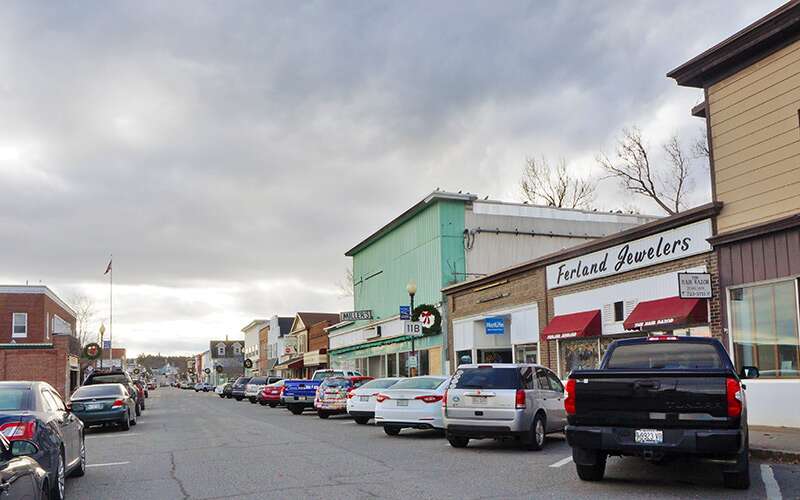
The coworking space will eventually be joined by retail and other uses.
“We are hoping to have multiple uses for the space,” Van Hook said. “All of these ideas are still in the design phase as we being our work with Liz Trice and her team to develop a business model for the co-working space and the building.”
She said they envision two retail spaces that face Penobscot Avenue
The first floor would also “supports entrepreneurs and day pass co-workers, welcomes community members, has food and drink, and is a bustling hub on our main avenue.”
The second floor, which is about 3,500 square feet, “would be geared toward co-workers who need quiet and a private office, and benefit from a shared conference room, a fiber broadband connection, and other typical office amenities.”
She said the downtown hub for innovators and entrepreneurs has been the Our Katahdin vision since the organization acquired the building, which is not only historic, but that are residents have a strong connection to, she said.
“That idea only works with high speed broadband and that is why our initial focus has been to set up a regional broadband utility that will provide the area with an open access broadband network and apply grant funding to establish a fiber broadband connection to the co-working space,” she said.
Co-working is part of the regional economic development effort to attract more young working people to the town, which was devastated by the paper mill closing in 2008, but is now getting economic traction with help from Our Katahdin projects, as well as boosters like the public broadband utility and a housing rehabilitation project.
“Having Liz on board to help us create a business model that works for our region by applying her on-going research on the roles and benefits of co-working spaces in rural communities is an exciting and essential next step in revitalizing 230 Penobscot and attracting more workers and jobs,” Van Hook said.
The development helps strengthen the other economic development efforts in the region, which also includes East Millinocket and Medway, and builds on growing momentum, Van Hook said.
Trice, in the release, said she’s happy to be part of the project and “part of the exciting work Our Katahdin is doing to spark rural entrepreneurship.
Eastern Maine Development Corp. will fund the work as part of an EDA grant to support rural economic development in the region. CEO Lee Umphrey said in the release, “We are pleased to continue supporting Our Katahdin’s efforts to revitalize the area. Bringing in this coworking expertise of PelotonLabs will encourage other entrepreneurs and innovators and lead to long-term economic growth and stability.”
The development corporation announced last week it will hire an economic development director for the Katahdin region. That announcement came a day before LignaCLT Maine LLC announced it’s pulling out of plans to build a 300,000-square-foot cross laminated wood production plant on the 1,300-acre former mill site adjacent to downtown because of the time it's taking to get an IRS lien on the mill site resolved.


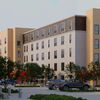
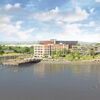






Comments